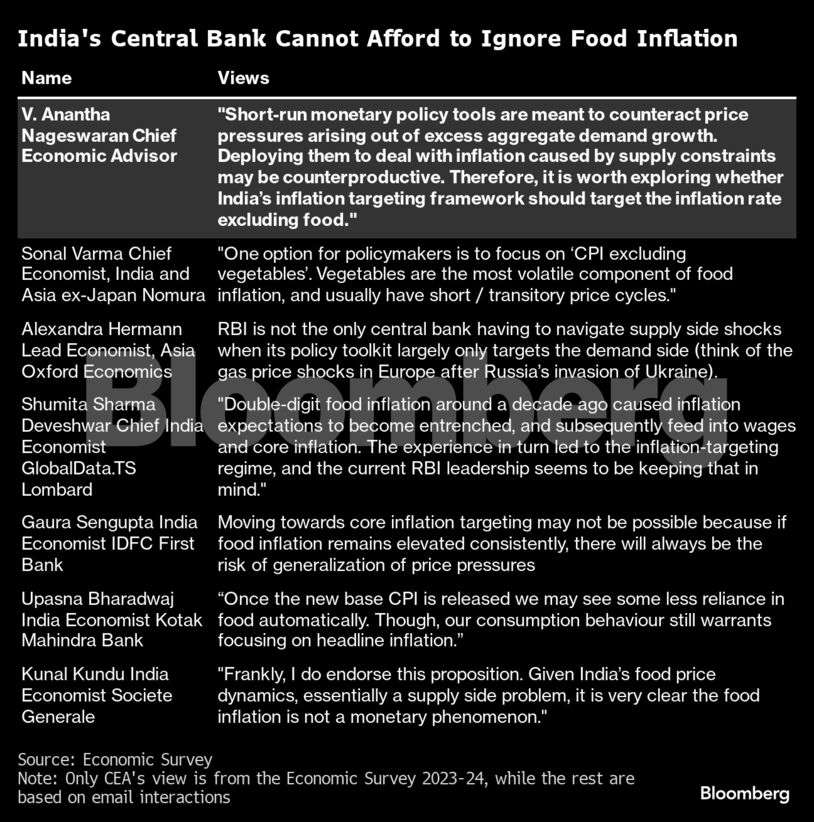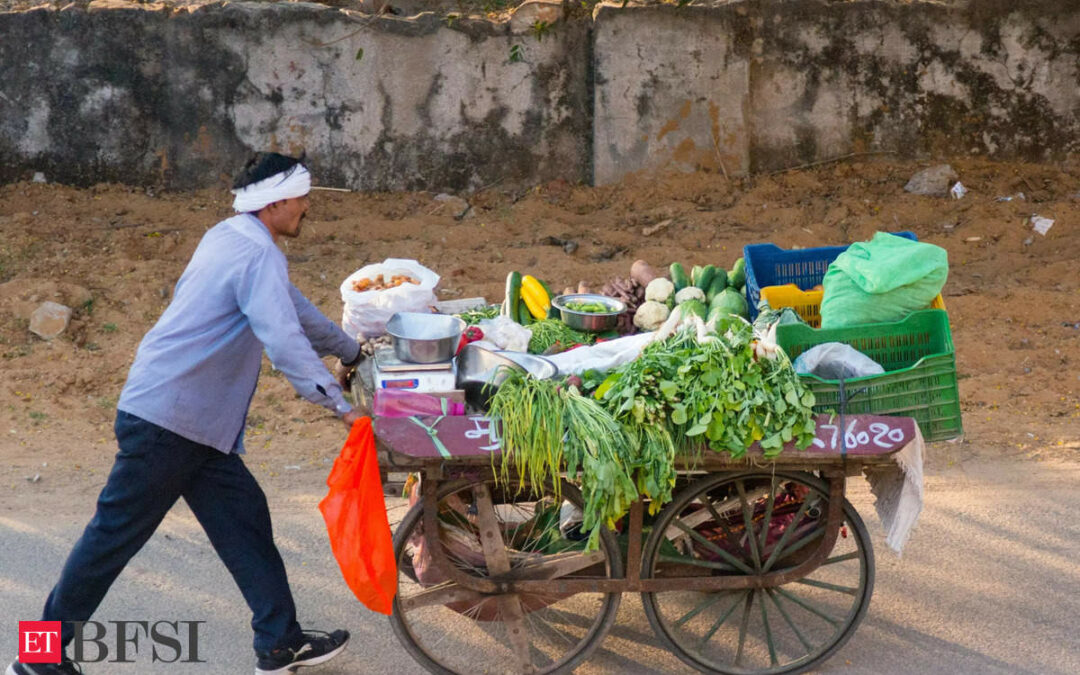A top Indian government adviser’s suggestion that policymakers cut out volatile food prices while targeting inflation met with skepticism from many economists, who say it’s inappropriate to ignore the costs of everyday items that consumers can’t do without.
The prescription for inflation-minus-food found mention in the government’s pre-budget Economic Survey published last week. The report’s author and India’s Chief Economic Adviser V Anantha Nageswaran argued that since interest rates can’t control the prices of food, deploying short-term monetary policy tools “to deal with inflation caused by supply constraints may be counterproductive.”
Several economists, including Nomura Holdings Inc.’s Sonal Varma, view this proposal as infeasible in a country like India where food makes up nearly half of the consumer price index basket. Gains in already-elevated food inflation has meant India’s retail price-growth in June quickened for the first time in six months, dashing hopes for an interest-rate cut anytime soon.
The RBI currently has a mandate to keep headline inflation at the midpoint of a 2%-6% range, and adjusts monetary policy settings to achieve that end. The inflation target is reviewed by the government every five years, and the next revision is scheduled for March 2026.
“I don’t think excluding food price movements altogether from the inflation targeting framework is a suitable approach,” said Alexandra Hermann, an economist with Oxford Economics. What India probably needs is to reconsider weights in the CPI basket, ensure better storage, processing, and transport facilities for food, and improving irrigation systems to make farmers less exposed to weather uncertainties.
Food is an important input in many products and any spike in its prices pushes up cost of the finished item. The RBI is watchful against this generalization of food. and has cited it as one of the reasons for keeping rates unchanged for over a year now.

A survey on consumption expenditure patterns released by the government in February showed food continued to remain the major expenditure item for both rural, as well as urban households, though the share has fallen in recent years from nearly half as reflected in the current gauge that’s based on 2012 prices.
“Changes in the target will require a deeper analysis to ensure that the framework is robust enough to withstand any future shocks, and ensures continued credibility in the flexible inflation targeting regime,” said Varma, chief economist for India and Asia ex-Japan at Nomura.
But not everyone is as downbeat about Nageswaran’s proposal.
“Food inflation is not a monetary phenomenon,” said Kunal Kundu, India economist for Societe Generale SA. “Food prices can be better controlled through policy interventions, including fiscal,” he said.
He noted that core inflation, which excludes volatile food and fuel costs and directly responds to monetary policy measures, “remains extremely muted.” That he cited as a “clear sign of weak domestic demand.”
Consumption growth slowed to just 4% in the year that ended in March, indicating demand slowdown that required less restrictive monetary policy conditions in India, Kundu said. “The growth is not as strong as headline real GDP data suggests. Its more of an illusion.”











